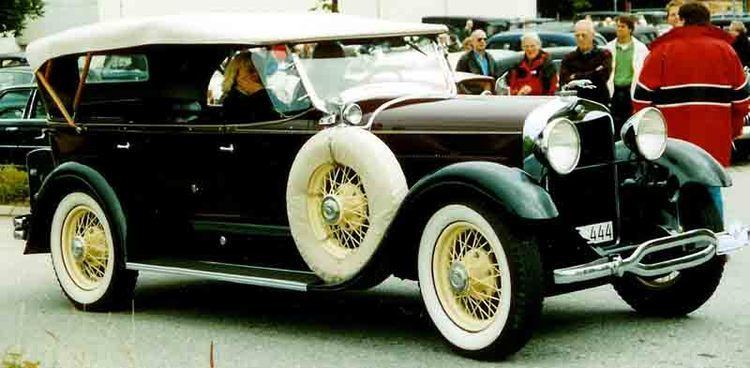Production 1917-1930 Layout FR layout | Class Luxury car | |
 | ||
Manufacturer Lincoln Motor Company
Lincoln (Ford) Assembly Lincoln Assembly, Detroit, Michigan Designer Angus Woodbridge
Edsel Ford | ||
The Lincoln L-Series is the first automobile that was produced by the Lincoln Motor Company. Introduced in 1917, the L-Series would continue to be produced after the bankruptcy of Lincoln in 1922 and its purchase by Ford Motor Company.
Contents
During 1930, Lincoln would introduce the Model K as its replacement. It was an alternative to various top level luxury vehicles to include the Mercedes-Benz 630, Rolls-Royce Phantom I, Packard, and Cadillac Type 51.
Assembly of the L-Series took place in Detroit, Michigan.
1917-1922
After leaving the company over a dispute with William Durant over World War I production, Cadillac founder Henry Leland created a second automobile company, the Lincoln Motor Company. Although the company depended on production of Liberty V12 aircraft engines as its primary source of revenue, Lincoln created the first L-Series car in 1917.
The L-Series was designed by Angus Woodbridge, the son-in-law of Henry Leland; trained as a ladies hatmaker, the design of the L-Series was considered old-fashioned for the time. In the years following World War I, the Lincoln Motor Company struggled in the postwar recession with the loss of aircraft engine production.
1922–1923
In financial trouble, Leland sold the company to Henry Ford in 1922 for $8 million, the amount determined by the judge presiding over the receivership Arthur J. Tuttle. Henry Leland valued the company at over $16 million. After a few months, Ford got rid of the Lelands and had his son, Edsel Ford, design a new body for the L-series. Edsel became President and Ernest C. Kanzler General Manager. Under Ford, the L-series was a robust car. In the first year, hydraulic shock absorbers were added. Edsel and Kanzler implemented production economies, trimming manufacturing costs by about $1000 per car.
1924–1926
In 1924, the L-series was given a newer look with such things as a nickel-plated radiator shell. 1925 is identified by the absence of cowl lights. Front and rear bumpers became standard. The smallest L-series was the 2-door, 2-passenger roadster. 1926 was basically the same except for some interior changes.
1927–1930
In 1927, the L-series got smaller wheels. Also, 4-wheel mechanical brakes became standard. All instruments were on an oval surface. A larger engine (though no HP increase) came in 1928. 1929 brought Safety glass and dual windshield wipers. 1930 was the last year for the L-series.
Pop-culture
A 1924 Lincoln was featured in the first season of the classic CBS sitcom The Good Guys.
In the 1986 comedy movie, The Money Pit, the house came with a 1929-30 Lincoln L-series 4-door Sport Phaeton as a part of the purchase.
